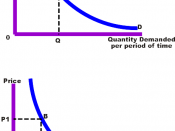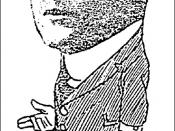Executive Summary
The full costing method associates fixed manufacturing costs with units of production and the amount of fixed manufacturing cost offset against revenue varies with the relationship between the number of units produced and the number sold. If production temporarily exceeds unit sales, some fixed manufacturing costs are deferred to future periods, and responsibility margin will be higher than would be reported under variable costing. If fewer units are produced during the period than are sold, fixed costs deferred in prior periods are offset against current revenue as inventory is drawn down. Thus, responsibility margin reported for the current period will be lower than would result from variable costing.
Under variable costing, the level of production has no effect on responsibility margin, because all fixed manufacturing costs are offset against revenue as they are incurred, regardless of the level of production.
A manufacturing company typically has departments specializing in purchasing, production, sales, shipping, accounting, finance, and personnel.
Production departments and sales departments often are further subdivided along different product lines or geographical areas. Many companies produce multiple products from common raw materials and a shared production process. In such manufacturing processes, two business issues arise. One is how to allocate joint cost among the various types of products manufactured. The second incremental type of decision is whether some types of products should be processed further to create an even more valuable finished good.
Case Context:
Groton Company offered Craik Veneer Company $20 per thousand feet for 1 million feet per month of sound backs in 1/24-inch birch veneer for the next 12 months. The production manager did not want to accept the offer based on the argument that the cost of production per thousand feet is at least $24.44. He arrived at this figure by dividing the joint cost...


